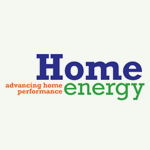|
|
Safety
We do not strictly control Google ad content. If you believe any Google ad is inappropriate, please email us directly here.
Sort results by: Date Added | Alphabetically - What's under your kitchen sink, in your garage, in your bathroom, and on the shelves in your laundry room? Do any of the household products you use pose a potential health risk to you and your family? An online consumer guide from NIH's National Library of Medicine (NLM) provides easy-to-understand information on the potential health effects of more than 4,000 common household products.
- Strategic selection and placement of household plants improves the air you breathe.
- A national population study reveals the prevalence of multiple chemical sensitivities.
- EPA has added an indoor air quality component to the already well-known Energy Star program—the Energy Star Indoor Air Package (IAP).
- Surprising facts about HEPA vacuums and what you can do about it.
- Consider everything from energy use to the ideal lighting conditions in your home before selecting permanent or free-standing lamps.
- The right air purifier may reduce your risk for certain illnesses.
- How the workings of a vacuum affect how well it cleans and the health of your home.
- The chemicals we\'re exposed to indoors, how they may affect our health, and what the government is - and perhaps isn\'t - doing about it.
- John Bower's presentation at the Energy Efficient Building Association, Excellence in Housing Conference, Dallas Texas, February 1994.
- Many commercial mattresses are manufactured using polyurethane, synthetic fabrics, chemical fire retardants, toxic dyes, formaldehyde and stain-resistant chemicals. These chemicals are outgassed over time, and can expose skin and lungs to potentially toxic substances, causing allergic reactions and other health problems.
- The traditional light bulb — and its recent improvements — explained.
- A comprehensive overview of the issues.
- Companies are voluntarily sharing with consumers more information about the ingredients in their products.
- Energy-efficient glass with a low-E coating is one of several types of insulated glass.
- Wondering what type of insulation is best for you and your home? Here's an overview of various insulation types and their health impact.
- From The Healthy House Answer Book: Answers to the 133 most commonly asked questions. Questions 88-98.
- Q and A with Thad Godish, Ph.D.
- While these coatings allow considerable ease in cleaning and reduce the need for oil in cooking, they have potentially serious drawbacks.
- Your house could be a major contributor to poor health.
We do not strictly control Google ad content. If you believe any Google ad is inappropriate, please email us directly here.



Information provided by The Healthy House Institute is designed to support,
not to replace the relationship between patient/physician or other qualified
healthcare provider.
Education Partners
Ads, ad links, products and content on this page are not necessarily endorsed by these organizations.
|

We do not strictly control Google ad content. If you believe any Google ad is inappropriate, please email us directly here.
|








